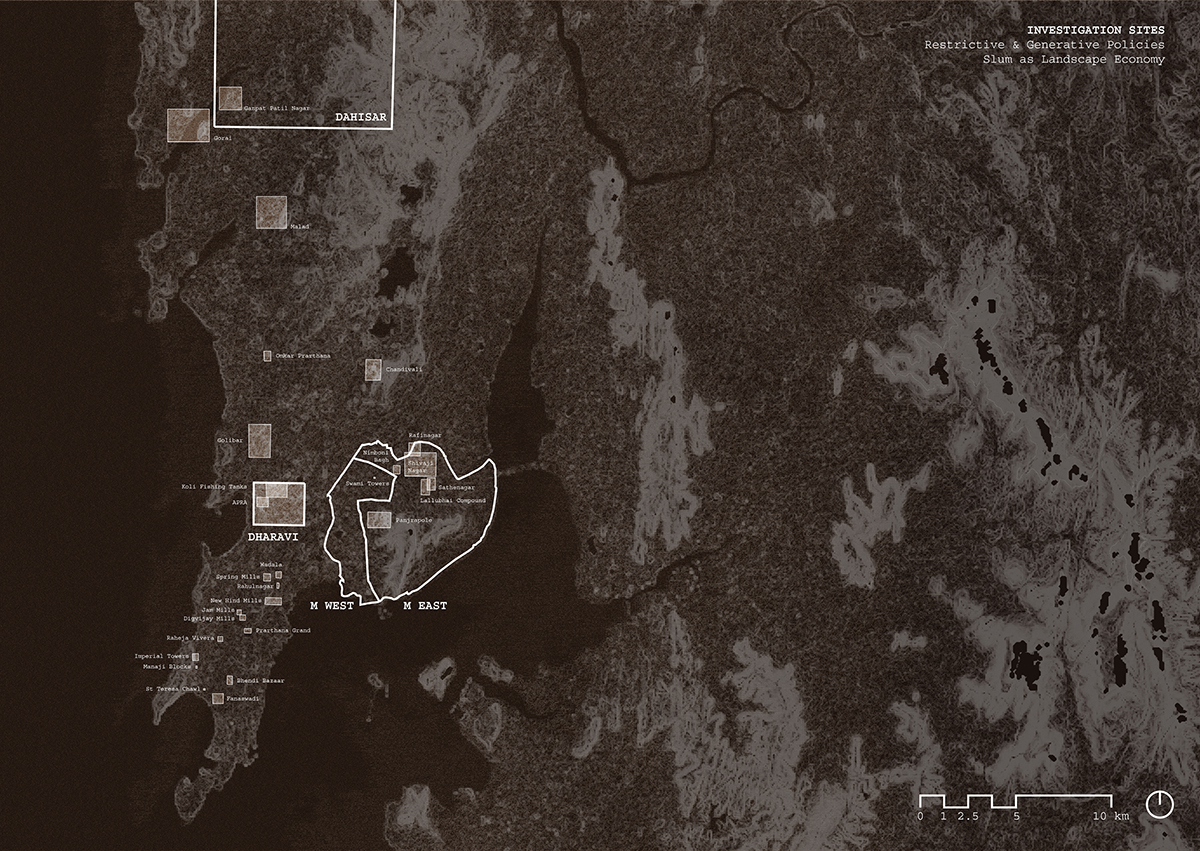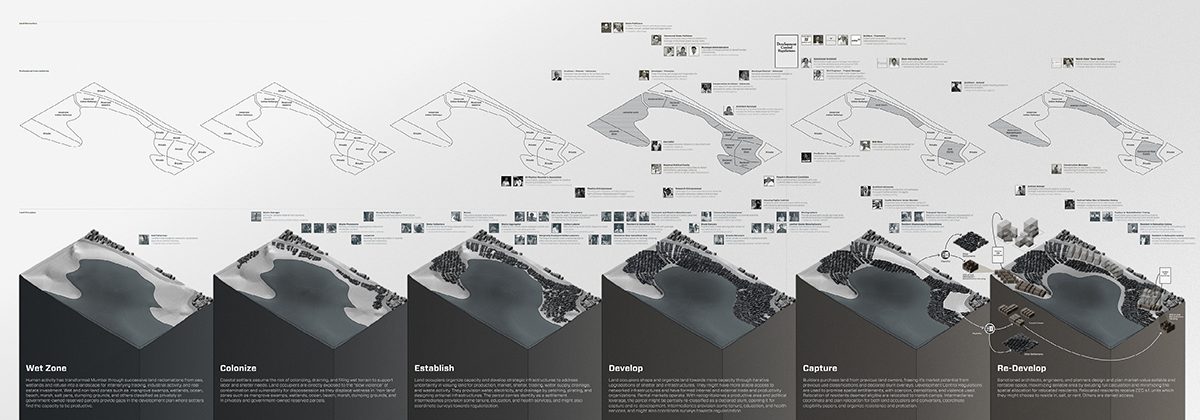50 Ways to Game a City: Loophole Planning in Contemporary Mumbai
50 Ways to Game a City: Loophole Planning in Contemporary Mumbai is a collaborative book of maps, drawings, images, and writing that considers the role of the slum in generating Mumbai’s contemporary urban form. The book will speak to a wide range of audiences, including architects, urban planners and scholars of urban society and culture.
50 Ways uses the analytical and representational methods of anthropology and urban planning to understand widespread land conversion and risk in the Greater Mumbai region following the liberalization of the land market during the 1990s. During this decade, national economic liberalization, the demand for real estate products in Indian cities soared but development plans remained geared towards cities with much smaller populations and different infrastructure need. Transferable Development Rights (TDR) or Air Rights which transferred development potential from one land parcel to another allowed the state to enter into bargains with private developers catering to market demand, offering them air rights in exchange for redeveloping slums and other dilapidated structures
AUTHORS
Vineet Diwadkar
Vyjayanthi Rao
SUPPORT
Graham Foundation
Harvard University Graduate School of Design
Harvard University South Asia Institute
New School for Social Research
Terreform Center for Advanced Urban Research
Urban Design Research Institute
PUBLISHER
Manuscript currently with UR Books
The city’s current architectural profile and its contemporary urban form has been generated over twenty-five years of banking air-rights in this fashion as well as through large-scale displacements of vulnerable residents from lands occupied by slums and other land parcels. This process has effectively transformed and expanded Mumbai’s property regime and transferred land from local stakeholders to anonymous investing conglomerates. In so doing, the nature of what constitutes architecture changes to include financial and policy instruments which influence both what is built and how it looks and functions.
Policies stemming from economic liberalization in 1991 have re-configured and re-categorized relationships between people, land, space, and finance towards increased volatility. A flood of domestic and foreign investment has manipulated these loopholes into a dominant planning mechanism, spurring new markets for the architectural currencies of people, transferrable development rights, and spatial allotments. This abstraction and commodification of people and space disassociated communities from the land, and has instead focused their attention on surviving the volatility of the land conversion process.
Over the past twenty-five years, land occupiers, land converters, and professional intermediaries have developed speculative architectural practices to harness uncertainty towards new possibilities. Residing in the Mumbai estuary, these case studies are the wet frontiers where slums persist as a pattern for coastal urbanization in Mumbai’s history, generating wet-specific models through which land occupiers drain and fill terrain to support habitation and labor. Over the longer term, land converters seek to capture this drier land, reclassify, and redevelop it towards higher exchange-value outcomes. Four ecology-based workflow settlements are analyzed for their relation with wet terrain, spatial interactions, economies and valuations of this landscape, and the ways their practices speculating this landscape maximize their possibilities.
Through five years of serial site documentation and interviews with residents, community activist and advocacy organizations, design and planning professionals, social scientists, builders, financiers, and bureaucrats, we have assembled fifty regional case studies to illustrate how a range of actors are using architecture to speculate with risk and unknown futures in the city. The concluding chapter uses four case studies to suggest alternatives that increase dignity, livability, and ecological performance into the land conversion process.
Investigation sites: a geography of restrictive and generative policies





